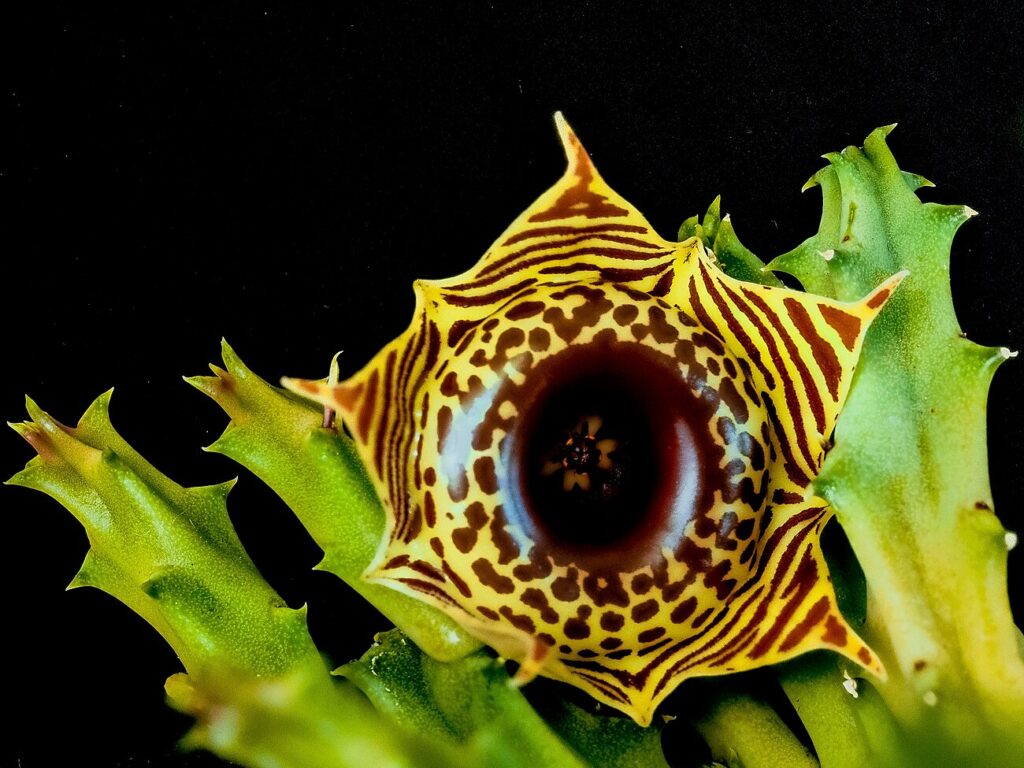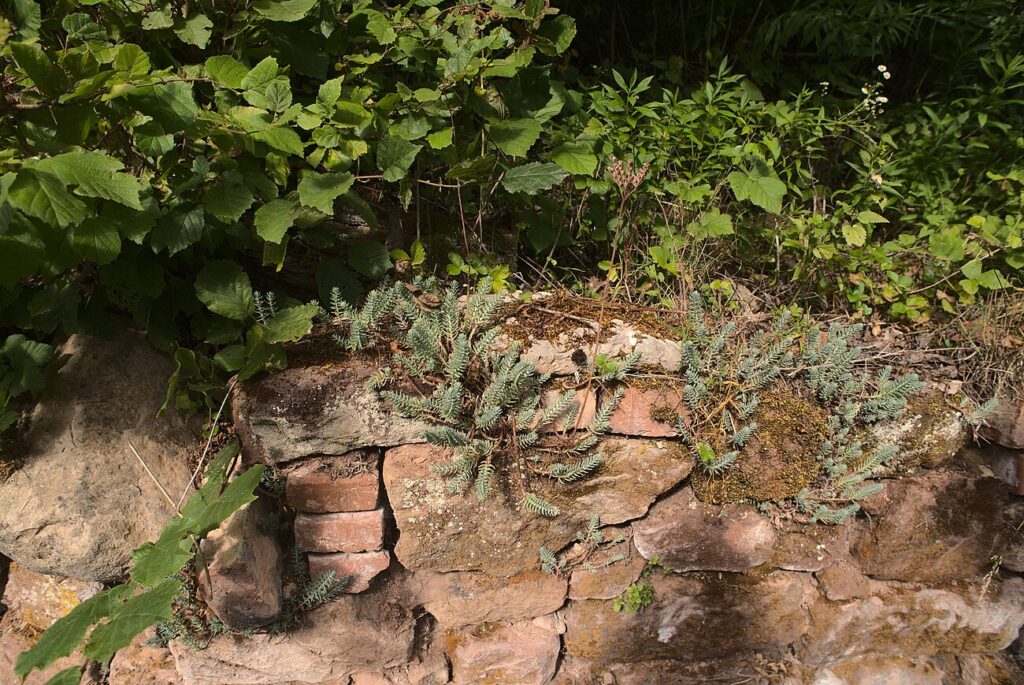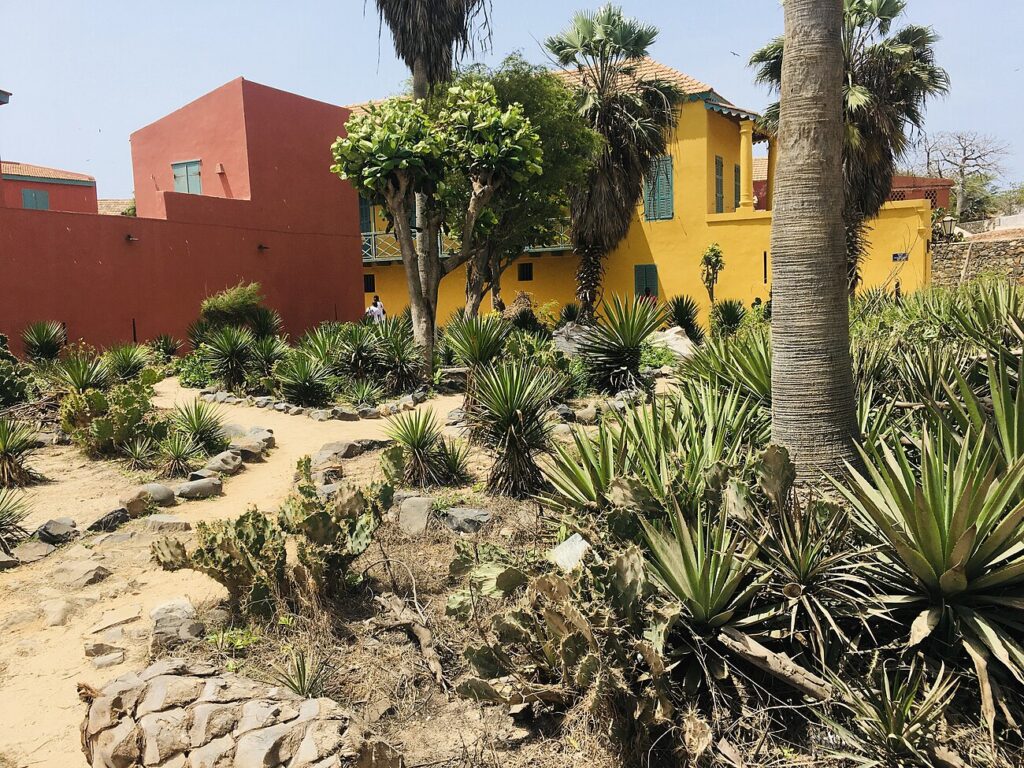Exploring Zulu Giant
You can use our free plant care app PlantPlants to identify Zulu Giant. scientifically recognized as Huernia zebrina and classified under Asclepiadaceae, stands out as a distinctive Succulent perennial known for its unique characteristics. While it may also be found under other Synonyms, Huernia schneideriana.withN/A form.
Temperature
Min 50 F (10 C); Max 100 F (38 C)
Watering
Allow the soil to dry out between watering
Fertilizing
Cactus or succulent fertilizer
Sunlight
Prefers full sun to partial shade
Toxicity
Non-toxic



Appearance and Growth Of Zulu Giant
At maturity, this species reaches approximately Up to 12 inches (30 cm) in height, presenting Thick, fleshy leaves with a grayish-green color along with Star-shaped flowers, typically yellow with maroon markings, followed by Produces elongated capsules; seeds are small and dust-like. These features are supported by a reliable Fibrous and shallow-rooted, ensuring stability and sustained growth.
Zulu Giant Origin and Habitat
Native to Native to South Africa, especially in the KwaZulu-Natal province, Zulu Giant thrives in Thrives in arid regions with rocky substrates at elevations around Typically found from sea level to 1,000 meters. Best suited for USDA Hardiness Zone 10-11. Whether grown indoor, in a curated garden or a more natural setting, its ecological requirements help maintain its vigor over time.



How to take Care of Zulu Giant
Light, Soil and Watering Zulu Giant.
You can use our free plant identify app PlantPlants to chose the best spot for Zulu Giant, This plant prefers Prefers full sun to partial shade and flourishes in Well-draining sandy or rocky soil with a soil pH of about 6.0 – 7.5.
Zulu Giant needs watering,Allow the soil to dry out between watering, guided by PlantPlants app, You can get plants daily watering schedule. to maintain Dry to moderately dry, ensure steady hydration. Applying water through Bottom watering preferred to avoid rot supports even distribution and helps prevent overwatering or dryness.
Temperature and Humidity
Zulu Giant performs best within 60 F to 85 F (15 C – 29 C). Its ideal growth occurs at around 70 F to 75 F (21 C – 24 C), though it tolerates ranges from Min 50 F (10 C); Max 100 F (38 C). Additionally, maintaining Low to moderate humidity encourages healthy foliage and overall plant vigor.
Fertilization & Soil Health
Feeding with Cactus or succulent fertilizer at the recommended Seasonal Application Frequency on PlantPlants App keeps nutrients balanced. Incorporating Perlite or coarse sand for improved drainage enhances soil structure and fertility, while staying alert to Yellowing leaves, stunted growth helps you adjust care as needed to maintain optimal plant health.
Routine and Maintenance
Regular attention ensures this plant’s beauty and longevity. Prune after flowering for Light pruning to remove dead stems tidies its appearance, while Every 2-3 years may be necessary as it grows, requiring a Increase pot size by 1-2 inches increase and a fresh Cactus mix or a mix of potting soil and sand. for Staking or Support. No staking required.
Seasonal Changes and Propagation of Zulu Giant
During Winter, growth may slow and some Minimal leaf drop, but may lose vigor in extreme cold can occur. For those looking to propagate, consider Seed propagation or stem cuttings and provide Warm temperatures, well-drained soil when starting from seed. If using cuttings, follow Allow cuttings to callous over for a few days before planting in well-draining soil to ensure successful rooting and healthy new plants.
Pests, Diseases and Prevention
our free plant identify and care app PlantPlants can help you diagnosisZulu Giant problems.Though generally robust, keep watch for Mealybugs, aphids, and spider mites and remain vigilant against Root rot if overwatered. Implementing Good air circulation, avoid damp conditions and applying Insecticidal soap for pests, remove affected roots for rot treatment when issues arise will help sustain the plant thriving.
Companions and Uses of Zulu Giant
This plant pairs nicely with Other succulents and cacti and shows N/A, making it a flexible choice for various Drought-tolerant gardens, rock gardens.
Edible and Cultural Aspects
the Edible Parts: N/A. Toxicty of Zulu Giant, Non-toxic. learning about its N/A, None, and N/A can be intriguing for culinary explorers. Some traditions highlight its Traditional uses in herbal medicine, but not widely documented or note its Appreciated for ornamental purposes.
Conservation and Status
With an Not evaluated, proper Habitat preservation and cultivation in gardens
Frequently Asked Questions
1. How much light does the Zulu Giant need?
It prefers full sun but can tolerate partial shade.
2. How often should I water it?
Water when the soil is dry, about every 7-10 days in summer.
3. Is it toxic to pets?
No, it is considered non-toxic.
4. Can I grow it indoors?
Yes, as long as it gets plenty of bright light.
5. What type of soil is best?
A well-draining cactus mix or sandy soil is ideal.
6. How do I propagate Zulu Giant?
You can propagate from seeds or by taking stem cuttings.
7. Does it require a lot of fertilizer?
No, fertilize every 4-6 weeks during the growing season.
8. What are the signs of overwatering?
Yellowing leaves and mushy stems are common indicators.
9. When should I repot my Zulu Giant?
Every 2-3 years or when it outgrows its pot.
10. Can it survive cold temperatures?
It can tolerate some cold but should be protected from frost.


